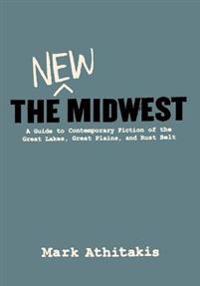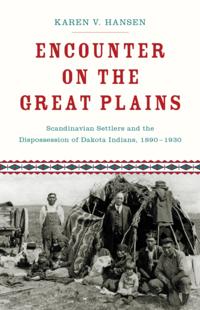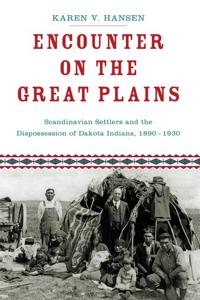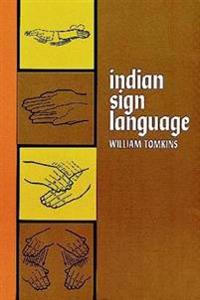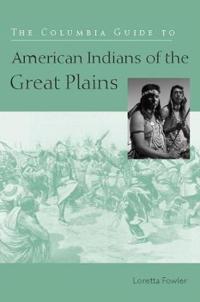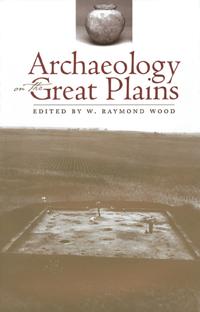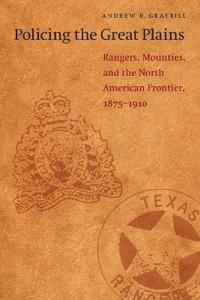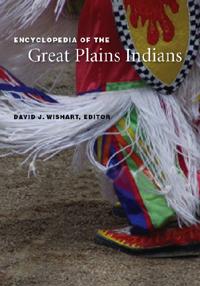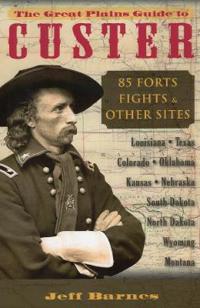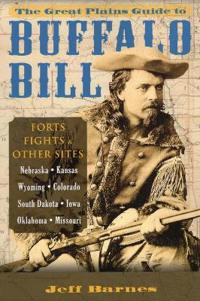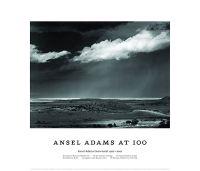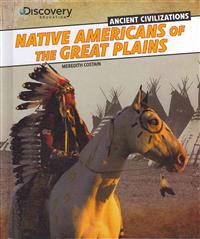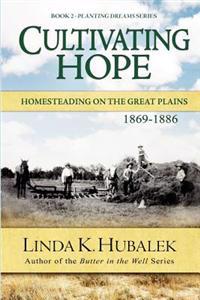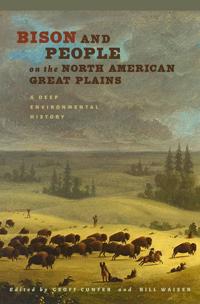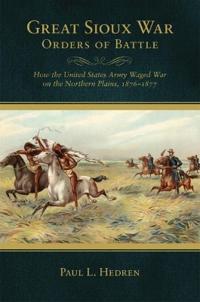The New Midwest: A Guide to Contemporary Fiction of the Great Lakes, Great Plains, and Rust Belt (häftad)
ISBN: 9780997774283 - UTGIVEN: 2017-02In the public imagination, Midwestern literature has not evolved far beyond heartland laborers and hardscrabble immigrants of a century past. But as the region has changed, so, in many ways, has its fiction. In this book, the author explores how shifts in work, class, place, race, and culture has be[...]
Encounter on the Great Plains: Scandinavian Settlers and the Dispossession of Dakota Indians, 1890-1930
ISBN: 9780190203245 - UTGIVEN: 2015-06In 1904, the first Scandinavian settlers moved onto the Spirit Lake Dakota Indian Reservation. These land-hungry immigrants struggled against severe poverty, often becoming the sharecropping tenants of Dakota landowners. Yet the homesteaders impoverishment did not impede their quest to acquire India[...]
Encounter on the Great Plains
ISBN: 9780190624545 - UTGIVEN: 2016-07In 1904, the first Scandinavian settlers moved onto the Spirit Lake Dakota Indian Reservation. These land-hungry immigrants struggled against severe poverty, often becoming the sharecropping tenants of Dakota landowners. Yet the homesteaders' impoverishment did not impede their quest to acquire Indi[...]
Encounter on the Great Plains (Inbunden)
ISBN: 9780199746811 - UTGIVEN: 2013-11In 1904, Scandinavian settlers began moving onto the Spirit Lake Dakota Indian Reservation. These land-hungry first and second generation immigrants struggled with poverty nearly as severe as that of their Dakota neighbors, often becoming sharecropping tenants of Dakota landowners. Yet the homestead[...]
Great Plains (Inbunden)
ISBN: 9780226257259 - UTGIVEN: 2009-10The Great Plains were once among the greatest grasslands on the planet. But as the United States and Canada grew westward, the Plains were plowed up, fenced in, overgrazed, and otherwise degraded. Today, this fragmented landscape is the most endangered and least protected ecosystem in North America.[...]
The Columbia Guide to American Indians of the Great Plains (Häftad)
avLoretta Fowler
ISBN: 9780231117012 - UTGIVEN: 200511Plains Indians have long occupied a special place in the American imagination. Both the historical reality of such evocative figures and events as Crazy Horse, Sitting Bull, Sacajewea, and the Battle of Little Bighorn and the lived reality of Native Americans today are often confused and conflated w[...]
This Place, These People: Life and Shadow on the Great Plains (Inbunden)
avDavid Stark
ISBN: 9780231165228 - UTGIVEN: 2013-12-13Great Plains (Häftad)
ISBN: 9780312278502 - UTGIVEN: 2001-05With his unique blend of intrepidity, tongue-in-cheek humor, and wide-eyed wonder, Ian Frazier takes us on a journey of more than 25,000 miles up and down and across the vast and myth-inspiring Great Plains. A travelogue, a work of scholarship, and a western adventure, Great Plains takes us from th[...]
Archaeology on the Great Plains (Häftad)
avW. Raymond Wood
ISBN: 9780700610006 - UTGIVEN: 1999-09This volume is the first attempt to synthesize current knowledge on the cultural history of the Great Plains since Wedel's Prehistoric Man on the Great Plains became the standard reference on the subject almost forty years ago. Fourteen authors have undertaken the task of examining archaeological ph[...]
Atlas of the Great Plains (Inbunden)
ISBN: 9780803215368 - UTGIVEN: 2011-07The Great Plains, stretching northward from Texas into Canada, is a region that has been understudied and overlooked. The Atlas of the Great Plains, however, brings a new focus to North America's midcontinent. With more than three hundred original full-color maps, accompanied by extended explanatory[...]
Great Plains Geology
ISBN: 9780803249516 - UTGIVEN: 2017-04Great Plains Geology concisely guides readers through the geological development of the Great Plains region. It describes the distinct features of fifty-seven geologic sites, including fascinating places such as Raton Pass in Colorado and New Mexico, the Missouri Breaks of Montana, and the Ashfall F[...]
Policing the Great Plains (Häftad)
avAndrew R. Graybill
ISBN: 9780803260023 - UTGIVEN: 2007-12In the late nineteenth century, the Texas Rangers and Canada's North-West Mounted Police were formed to bring the resource-rich hinterlands at either end of the Great Plains under governmental control. Native and rural peoples often found themselves squarely in the path of this westward expansion an[...]
Great Plains Bison (häftad)
ISBN: 9780803285774 - UTGIVEN: 2017-09A Project of the Center for Great Plains Studies and the School of Natural Resources, University of NebraskaGreat Plains Bison traces the history and ecology of this American symbol from the origins of the great herds that once dominated the prairie to its near extinction in the late nineteenth cent[...]
Encyclopedia of the Great Plains Indians (häftad)
ISBN: 9780803298620 - UTGIVEN: 2007-03Until the last two centuries, the human landscapes of the Great Plains were shaped solely by Native Americans, and since then the region has continued to be defined by the enduring presence of its Indigenous peoples. The Encyclopedia of the Great Plains Indians offers a sweeping overview, across tim[...]
The Great Plains Guide to Custer (Häftad)
ISBN: 9780811708364 - UTGIVEN: 2012-01First book that directs readers to all of the sites Custer visited west of the Mississippi River More than 300,000 people visit the site of George Armstrong Custer's Last Stand each year however the 1876 Battle of Little Bighorn is only part of Custer's story on the Great Plains. The famed general [...]
The Great Plains Guide to Buffalo Bill (Pocket)
avJeff Barnes
ISBN: 9780811712934 - UTGIVEN: 2014-02The Great Plains Guide to Buffalo Bill follows the life of one of the Wild West's most legendary heroes, taking readers on a unique, informative tour of the residences, forts, battlefields, and other sites that interpret Cody's life on the Great Plains. Each chapter focuses on a period in Cody's lif[...]
Thunderstorm Over the Great Plains, Near Cimarron, New Mexico 1967 (övrigt)
ISBN: 9780821228814 - UTGIVEN: 2003-06Cultivating Hope: Homesteading on the Great Plains (Planting Dreams Series) (häftad)
ISBN: 9781480094925 - UTGIVEN: 2012-10Mammoths of the Great Plains Plus Writing Science Fiction During World War Three and At the Edge of the Future (Pocket)
avEleanor Arnason
ISBN: 9781604860757 - UTGIVEN: 201005The Prairie Romance Collection: 9 Historical Romances from America's Great Plains (häftad)
ISBN: 9781616266967 - UTGIVEN: 2012-05Relive history on the American Great Plains as penned by nine different multi-published authors. Follow pioneers, immigrants, and orphans through their adventures, heartaches, challenges, victories, and romances. You are sure to find more than one favorite among nine stories in this unique collectio[...]
Bison and People on the North American Great Plains
ISBN: 9781623494742 - UTGIVEN: 2016-10The near disappearance of the American bison in the nineteenth century is commonly understood to be the result of overhunting, capitalist greed, and all but genocidal military policy. This interpretation remains seductive because of its simplicity; there are villains and victims in this familiar ca[...]
Great Plains (Pocket)
avFrazier, Ian
ISBN: 9781862078703 - UTGIVEN: 2006-02-06Reportage resists easy definition and comes in many forms, but it reveals hidden truths about people and events that have shaped the world we know. This book is a journey from tumbleweed and American Indian tepees to the house where Bonnie and Clyde did their dirty work to the scene of the murders i[...]
The Castle of Otranto (Ljudbok)
avHorace Walpole, Great Plains
ISBN: 9789176050644The Castle of Otranto is a 1764 novel by Horace Walpole. It is generally regarded as the first gothic novel, initiating a literary genre which would become extremely popular in the later 18th century and early 19th century. Thus, Walpole, by extension, is arguably the forerunner to such authors as C[...]
Great Sioux War Orders of Battle: How the United States Army Waged War on the Northern Plains, 1876-1877 (Häftad)
avPaul L. Hedren
ISBN: 9780806143224 - UTGIVEN: 201208Lasting nearly two years, the Great Sioux War pitted almost one-third of the U.S. Army against Lakota Sioux and Northern Cheyennes. By the time it ended, this grueling war had played out on twenty-seven different battlefields scattered across five states, resulted in hundreds of casualties, cost mil[...]

